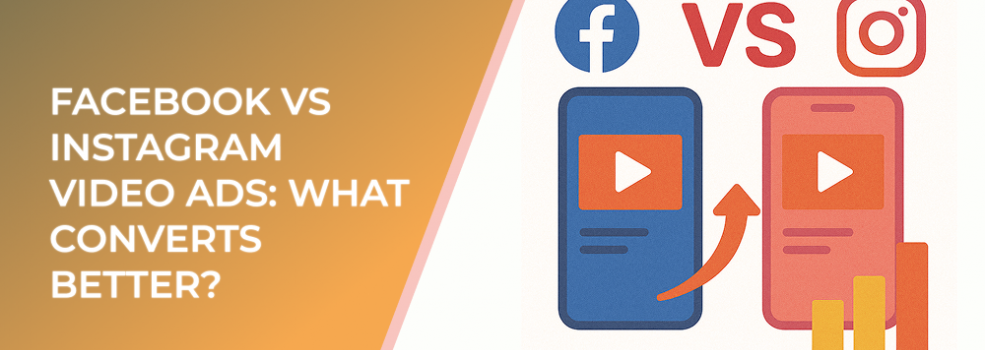Facebook and Instagram share the same ads platform, but their contexts, consumption habits, and format norms differ. The right choice depends on your audience, creative, and objective. This guide summarizes directional benchmarks, outlines when each network converts better, and provides a clean testing framework you can run with LeadEnforce.
Directional Benchmarks (to Start Your Tests)
These are common ranges seen across mixed verticals; your account will vary. Use them as guardrails, not guarantees.
-
CPM: Facebook Feed often 10–25% lower than Instagram Feed; Instagram Reels can be 5–15% lower than Instagram Feed in non‑peak periods.
-
CTR (Link): Instagram Reels and Feed creatives that are highly visual/UGC‑style often post +10–30% higher CTR vs Facebook Feed. Static‑heavy edits tend to perform similarly or better on Facebook.
-
3‑Second Hold Rate: Aim for ≥ 70% on Reels and ≥ 60% on Stories; Facebook Feed/Reels targets ≥ 55–65% depending on audience.
-
Video Completion (15s ThruPlay): Instagram Reels/Stories 30–45%; Facebook Reels/Stories 25–40% for comparable edits.
-
Sound‑On Rate: Instagram Reels 65–80%; Facebook Feed 40–55%; Facebook Reels 60–75%.
-
CPA/ROAS: When creative is native to the placement, Instagram Reels/Feed can deliver 5–20% lower CPA for visually led products; Facebook Feed often wins cost efficiency on broader audiences and longer consideration.
When Instagram Converts Better
-
Visually-led, impulse‑friendly products (beauty, apparel, home decor, food). First‑frame impact and aesthetic matter.
-
UGC/creator‑style edits with quick cuts, captions, and voiceover. The discovery mindset in Reels rewards hook‑first storytelling.
-
Younger skewed segments and mobile‑first behaviors where saves/shares predict downstream conversions.
Signals to watch: higher save/share rate, hook rate ≥ 70%, CTR +10–25% over Facebook peers, and CPA within ±15% of target for two weeks.
When Facebook Converts Better
-
Considered purchases (higher AOV, utilities, B2B, education) where users respond to clearer information density and comments.
-
Mixed creative stacks (image + short video) and longer captions supporting explanation and FAQs.
-
Broader demographic reach and community/Group traffic that compound remarketing.
Signals to watch: stable CPMs 10–25% lower than Instagram peers, consistent comment assists, and stronger view‑through conversion share in multi‑device journeys.
Format Matchups: Where Each Shines
-
Instagram Reels: discovery, creator‑style UGC, fast demos; best for prospecting and engagement lift.
-
Instagram Stories: time‑sensitive offers, mid‑funnel nudges; concise sequences of 3–5 frames.
-
Facebook Feed: cost‑efficient scale, detail‑friendly messaging; image+video combos.
-
Facebook Reels: incremental reach at competitive CPMs when you already have Reels‑native edits.
Creative Blueprints
For Instagram Reels
-
Hook in ≤ 1 second with motion/pattern interrupt.
-
Captions or on‑screen text for silent scrollers; CTA by second 2–3.
-
Keep cuts snappy; show the product in use immediately.
For Instagram Stories
-
First frame shows benefit/offer; under 2 seconds reading time.
-
Use 3–5 panels: Problem → Proof → Offer → CTA.
-
Ensure CTA area remains unobstructed.
For Facebook Feed
-
Pair a short video with high‑clarity image variants.
-
Add social proof elements and benefit headlines in the post copy.
-
Test square 1:1 and vertical 4:5 for feed dominance.
For Facebook Reels
-
Re‑cut your best Reels concepts with pacing tuned to slightly longer watch curves.
-
Use subtitles and clear mid‑roll CTAs.
Clean Testing Framework
-
Isolate variables: create separate ad sets for each network/placement (Facebook Feed, Facebook Reels, Instagram Feed, Instagram Reels, Instagram Stories). Same geo, optimization event, and attribution window.
-
Parallel creatives: produce sibling edits from the same concept, each native to its placement.
-
Learning volume: aim for ≥ 50 purchases/week (or ≥ 100 qualified leads/month) before declaring a winner.
-
Budget steps: scale in ≤ 30% increments to avoid resetting learning.
-
Read the right metrics: CPM → Hook Rate (3s) → CTR/CPC → CVR → CPA/ROAS. Saves/shares predict later wins on Instagram.
LeadEnforce Workflow
-
Audience hygiene: normalize identifiers, SHA‑256 hash, and deduplicate before syncing to Meta.
-
Segmentation: maintain mutually exclusive stages (Prospecting → Engaged → Cart/Lead → New/Existing Customers) to cut overlap.
-
Creative mapping: tag concepts with placement suffixes (e.g.,
ConceptX_Reels,ConceptX_Feed). -
Automations: weekly refresh of seeds and suppressions (recent buyers, refunds, employees/test accounts).
-
Reporting: monitor placement‑level CPM, CTR, hook rate, and CPA; reallocate budgets every 7 days.
30/60/90‑Day Plan
Days 0–30
-
Launch split test across 3–4 placements with 2–3 concept families.
-
Validate conversion events and attribution.
Days 31–60
-
Scale the top two placements that hold CPA within ±15% of target and beat peers on hook rate/CTR.
-
Add 1–2 new geos or audience tiers.
Days 61–90
-
Layer retargeting sequences per placement (e.g., Reels for re‑introduction, Stories for urgency).
-
Institutionalize weekly creative rotation and quarterly audience hygiene audits.
Troubleshooting
-
High CTR, low CVR: curiosity hooks; tighten offer clarity and landing page speed.
-
Great video metrics, weak sales: strengthen product proof and pricing; test Feed with longer captions.
-
Delivery stalls: widen lookalike tiers, enable Advantage placements with strict exclusions, or increase budget in small steps.
Suggested Reads from the LeadEnforce Blog
-
Retargeting Without Waste: Exclusions, Frequency Caps, and Creative Rotation
-
Audience Hygiene 101: Formatting, Hashing, and Deduplication Best Practices
Takeaway
There’s no universal winner. Instagram often dominates on discovery and visual impulse; Facebook frequently wins on cost efficiency and considered purchases. Match placement to intent, build native edits, test fairly, and scale the channels that sustain target CPA with healthy engagement. LeadEnforce gives you the hygiene, segmentation, automation, and reporting to make confident allocation calls.

